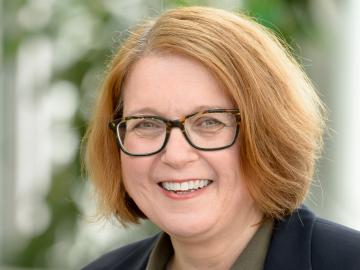
Filter News
Area of Research
- (-) Computer Science (4)
- (-) Materials (204)
- (-) Materials for Computing (13)
- Advanced Manufacturing (13)
- Biological Systems (14)
- Biology and Environment (40)
- Biology and Soft Matter (1)
- Building Technologies (3)
- Chemistry and Physics at Interfaces (4)
- Clean Energy (167)
- Climate and Environmental Systems (2)
- Computational Biology (4)
- Computational Engineering (2)
- Energy Frontier Research Centers (7)
- Energy Sciences (2)
- Fossil Energy (2)
- Fuel Cycle Science and Technology (1)
- Functional Materials for Energy (6)
- Fusion and Fission (17)
- Fusion Energy (2)
- Geographic Information Science and Technology (2)
- Isotope Development and Production (1)
- Isotopes (8)
- Materials Characterization (2)
- Materials Synthesis from Atoms to Systems (5)
- Materials Under Extremes (5)
- National Security (24)
- Neutron Science (77)
- Nuclear Science and Technology (24)
- Nuclear Systems Modeling, Simulation and Validation (1)
- Nuclear Systems Technology (1)
- Quantum Condensed Matter (1)
- Quantum information Science (1)
- Reactor Technology (1)
- Sensors and Controls (1)
- Supercomputing (107)
- Transportation Systems (5)
News Type
News Topics
- 3-D Printing/Advanced Manufacturing (15)
- Advanced Reactors (1)
- Artificial Intelligence (5)
- Bioenergy (8)
- Biology (4)
- Biomedical (4)
- Buildings (2)
- Chemical Sciences (22)
- Climate Change (5)
- Composites (4)
- Computer Science (12)
- Coronavirus (2)
- Critical Materials (8)
- Cybersecurity (4)
- Decarbonization (4)
- Energy Storage (21)
- Environment (8)
- Exascale Computing (1)
- Frontier (2)
- Fusion (2)
- Grid (2)
- High-Performance Computing (2)
- Isotopes (6)
- ITER (1)
- Machine Learning (2)
- Materials (40)
- Materials Science (40)
- Microscopy (13)
- Molten Salt (2)
- Nanotechnology (22)
- National Security (4)
- Net Zero (1)
- Neutron Science (20)
- Nuclear Energy (2)
- Partnerships (8)
- Physics (14)
- Polymers (10)
- Quantum Computing (1)
- Quantum Science (13)
- Renewable Energy (1)
- Security (2)
- Space Exploration (1)
- Summit (2)
- Sustainable Energy (9)
- Transformational Challenge Reactor (1)
- Transportation (6)
Media Contacts

Analytical chemists at ORNL have developed a rapid way to measure isotopic ratios of uranium and plutonium collected on environmental swipes, which could help International Atomic Energy Agency analysts detect the presence of undeclared nuclear

ORNL's Larry Baylor and Andrew Lupini have been elected fellows of the American Physical Society.

A team led by the ORNL has found a rare quantum material in which electrons move in coordinated ways, essentially “dancing.”

Pengfei Cao, a polymer chemist at ORNL, has been chosen to receive a 2021 Young Investigator Award from the Polymeric Materials: Science and Engineering Division of the American Chemical Society, or ACS PMSE.

ASM International recently elected three researchers from ORNL as 2021 fellows. Selected were Beth Armstrong and Govindarajan Muralidharan, both from ORNL’s Material Sciences and Technology Division, and Andrew Payzant from the Neutron Scattering Division.

Scientists at ORNL and the University of Tennessee, Knoxville, have found a way to simultaneously increase the strength and ductility of an alloy by introducing tiny precipitates into its matrix and tuning their size and spacing.

Sergei Kalinin, a scientist and inventor at the Department of Energy’s Oak Ridge National Laboratory, has been elected a fellow of the Microscopy Society of America professional society.

Using complementary computing calculations and neutron scattering techniques, researchers from the Department of Energy’s Oak Ridge and Lawrence Berkeley national laboratories and the University of California, Berkeley, discovered the existence of an elusive type of spin dynamics in a quantum mechanical system.

Cynthia Jenks has been selected associate laboratory director for the Physical Sciences Directorate at the Department of Energy’s Oak Ridge National Laboratory. She joins the lab April 19.

The COHERENT particle physics experiment at the Department of Energy’s Oak Ridge National Laboratory has firmly established the existence of a new kind of neutrino interaction.


